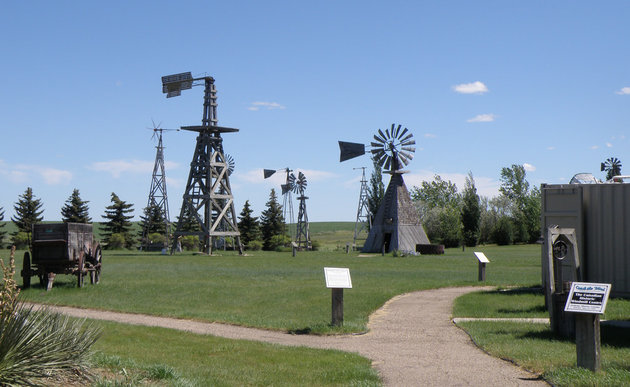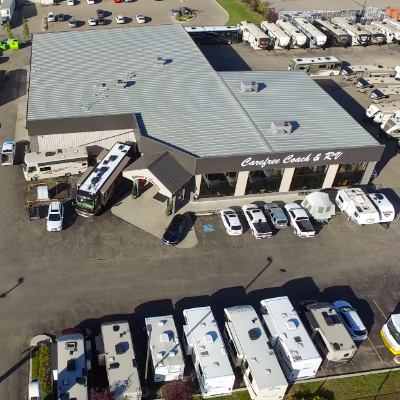A historical trip through southern Alberta
Tour through the province and see some of Alberta's most intriguing historical attractions.

Travel Alberta’s offer of an annual pass to visit historic Alberta sites, made this the perfect year to take trips through the province.
I never realized how much of a hub Lethbridge is. Highways 4, 3 and 5 all meet there and travel off into different directions. Highway 4, (extending across the border from Interstate 15 in Montana), led us to Writing-on-Stone and then one of the best but least publicized sites: the Canadian Historic Windpower Interpretive Centre and Museum at Etzikom. Highway 3 took us to the Head-Smashed-In Buffalo Jump. Then we took Highway 5 to Cardston and the Remington Carriage Museum.
Writing-on-Stone Provincial Park
There in the middle of the prairies just north of the Montana border is the Milk River. It carves a path coming up from Montana - meanders along for a few miles - and then wanders back into Montana. The river offers a fascinating canoe pathway or an inviting swimming hole. The banks are steep cliffs and eons of climate change and erosion have created a landscape unique to the valley. About 30 kilometres along Highway 501 east of the town, a rather innocuous Writing-on-Stone Provincial Park sign directs you off to your right and into a field of wild prairie grass. A road leads down into the Milk River Valley to a campground that lies in and amongst the trees along the Milk River. Throughout the park, oddly shaped rock formations (Hoodoos) erupt out of a sandstone foundation. This area was a traditional native camping spot with an abundance of water and food, but most of all it was valued for the protection it offered. To the Blackfoot people, Writing-on-Stone has long been a sacred place and where they left messages for those that followed. The park offers interpretive programs and guided tours throughout the day and evening.
The Etzikom Museum and the Canadian Historic Windpower Interpretive Centre
Now this is a real hidden treasure! The museum, set up and manned by local volunteers, took over the Etzikom School when it closed down - and the windmill site sits next to it. The four acres of windmills range from Holland-looking mills to the water pumps that dot the landscape throughout the south.
Head-Smashed-In Buffalo Jump
Gradually over the years the first nations peoples have come into their own. The indigenous cultures have become an important and integral part of the culture in Southern Alberta. The Blackfoot Confederation is an interesting phenomenon. It is made up of three tribes — the Blackfoot proper (Siksika), the Bloods (Kainai), and the Peigan (Pekuni). Each tribe was independent, but they all spoke the same language and regarded themselves as allies. They were a nomadic people and their movements were governed strongly by the location of the buffalo, along with the weather and the season. Head-Smashed-In Buffalo Jump has been constructed to remember and celebrate the history and traditions of the prairie people. It was designated a National Historic Site in 1968, a Provincial Historic Site in 1979, and a finally a World Heritage Site in 1981 for its testimony of prehistoric life and the customs of aboriginal people. The interpretive centre is a five-level structure that sits atop the cliff leading to the buffalo jump. Leading out from the building, the foot path wanders through grassland where the buffalo were chased and impelled over the edge to their deaths. If you close your eyes and stretch your mind, you can feel the thunder of the hooves as these monstrous animals vanished over the edge.
Cardston and the Remington Carriage Museum
In the late 1880s, Cardston became the first LDS (Mormon) settlement in Canada. They say that the impetus to come north from Utah and Montana was to escape the American laws against polygamy. Polygamy was integral part of the Mormon religion and is still upheld by certain extremist Mormon groups in North America. The first Canadian Temple of the Church of Jesus Christ of Latter-day Saints was completed within the first months of their arrival (in 1887) at Cardston at the base of the Canadian Rocky Mountains. The Kainai First Nation’s (Blood Tribe) Reserve . . . one of the largest reserves in North America . . . stretches out to the north of the community and the Canada-USA border is less than 25 miles to the south. To this day, the Mormon Church wields a strong influence over the community.
The Remington Carriage Museum is a park unto itself. It is situated on 20 acres on the south end of Cardston's main street, and covers over 64,000 square feet (5,900 m 2 ). Once inside the main building, there are rooms of carriages, wagons and sleighs. The museum has the greatest collection of horse-drawn vehicles in North America (over 300). Many displays in the museum are set up to show the horses and wagons in their original settings; others give us a glimpse of the travel mode of the times; and still others show the shop fronts needed to support the horse and buggy trade. Visitors are invited to the Carriage Preservation Workshop where expert technicians carry out the art of blacksmithing, wheelrighting, woodworking, metalworking and finishing.






